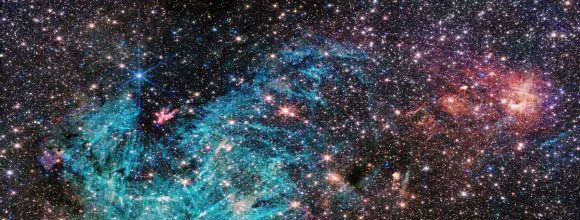In the deadly space region near the supermassive black hole Sagittarius A* of the Milky Way galaxy that contains Earth, scientists have discovered a bizarre world composed of 500,000 newborn objects referred to as Sagittarius C.
Analyzing data from the James Webb Space Telescope, researchers from the University of Virginia (USA) revealed that Sagittarius C contains approximately 500,000 “protostars,” which are stars that are still forming and growing.
At the center of this protostar cluster is a “monster” protostar previously known, which has a mass 32 times that of the Sun.

Sagittarius C emerges eerily in James Webb data, right next to the “monster” Sagittarius A* – (Image: NASA/ESA/CSA/STScI)
This “monster” protostar first attracted the attention of scientists because the environment surrounding the supermassive black hole Sagittarius A* at the galaxy’s center is so harsh that all astronomical theories suggest no stars could possibly form there.
However, it is not just a single “monster” protostar. The world of 500,000 bizarre protostars, located just 300 light-years from Sagittarius A*, promises to overturn many theories, according to Sci-News.
The Virginia team observed Sagittarius C using the NIRCam, a near-infrared camera on the James Webb Space Telescope.
“The cloud from which the protostars are emerging is so dense that light from the stars behind it cannot reach James Webb, making it appear less crowded than it actually is,” the research team stated.
Nevertheless, analyses have determined the actual density of the region, allowing for an estimation of the number of existing protostars.
Sagittarius C appears eerily with small dark infrared clouds, scattered like holes in the starry sky. It is where future stars are forming.
NIRCam also captured large-scale emissions from ionized hydrogen around the dark clouds, displayed in a bluish-green color in the images. This is the result of high-energy photons escaping from massive young stars.
The results indicate that the central region of the galaxy is not as empty as once thought, but rather filled with chaotic magnetic gas clouds forming giant stars, with the entire process affecting the surrounding gas through stellar winds, radiation, and cosmic rays.
The giant stars in Sagittarius C are many times larger than the Sun and are known as factories for producing heavy elements in the galaxy. Understanding them will help unravel the story of the origins of much of the universe, according to the authors.


















































